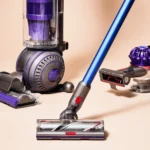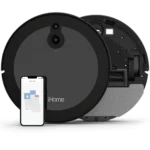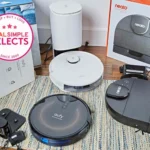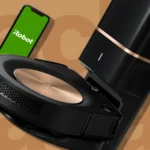Are you struggling to choose the perfect vacuum cleaner for your home? With so many models on the market, it’s easy to get overwhelmed. But don’t worry, we’ve got you covered! In this article, we’ll break down the 5 factors that affect a vacuum cleaner’s cleaning ability. From the Filtration System to the Mobility, we’ll explore everything you need to know to make an informed decision. So, let’s dive in!
Filtration System
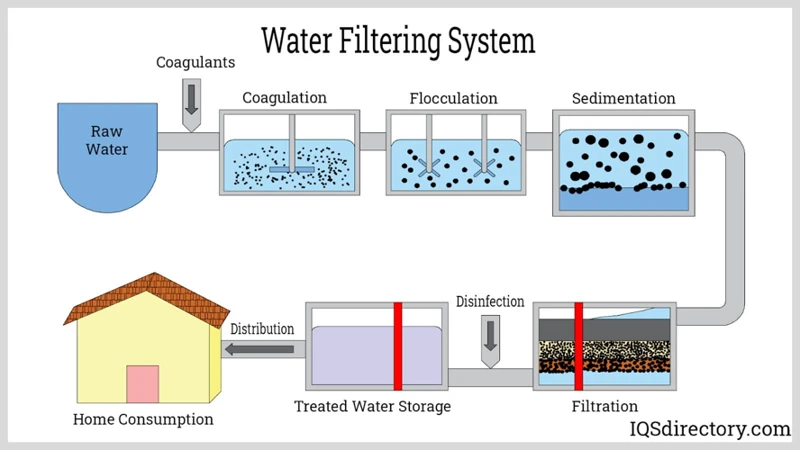
When it comes to buying a vacuum cleaner, most people focus on its suction power and cleaning ability. However, what many don’t realize is that the filtration system is just as important as the suction power. A good filtration system ensures that the air is clean when it’s released back into the room. No one wants to spend time vacuuming only to find themselves sneezing and coughing afterwards due to the dust and allergens that were picked up. In this section, we’ll explore the different types of filtration systems available and how they affect a vacuum cleaner’s cleaning ability. We’ll also discuss the importance of maintaining the filters to ensure their longevity and efficiency.
High-Efficiency Particulate Air Filters
A High-Efficiency Particulate Air (HEPA) Filter is known for effectively trapping small particles and allergens. This type of filter is commonly used in vacuum cleaners, air purifiers, and other applications that require maximum air quality. HEPA filters can trap 99.97% of particles as small as 0.3 microns.
A vacuum cleaner with a HEPA filter is ideal for people with allergies or asthma, as it can effectively eliminate dust, pollen, and other small particles from the air during vacuuming. HEPA filters are made from a dense matrix of randomly arranged fibers that create a maze-like pathway for particles to get trapped.
When purchasing a vacuum cleaner with a HEPA filter, it’s important to check whether the filter is permanent or replaceable. Some vacuum cleaners come with a washable HEPA filter that can be reused several times, while others require periodic replacement of the filter. It’s important to follow the manufacturer’s instructions for filter maintenance to ensure the vacuum cleaner remains effective.
HEPA filters are typically used in multi-stage filtration systems, which can include a pre-filter or a carbon filter. These filters work together to capture larger particles and odors, which then allows the HEPA filter to focus on eliminating the smaller particles.
A vacuum cleaner with a HEPA filter is a great investment for anyone looking to maintain a clean and healthy environment. To learn more about how to improve your vacuum cleaner’s suction power, read our article on Suction Power. If you’re interested in other types of filters that can improve overall air quality, read our article on HEPA filters.
Multi-Stage Filtration
A vacuum cleaner’s filtration system is an essential factor in maintaining the indoor air quality of a home. With multi-stage filtration, the device can remove various particles that are invisible to the naked eye. The more stages the system has, the better the quality of cleaning of the vacuum cleaner. Every stage contributes to filtering the air and separates dirt and debris as they pass through the system.
The multi-stage filtration system includes the following stages:
- Pre-motor Filter: This filter protects the motor from dust and debris and enhances the longevity of the machine. In case the pre-motor filter gets damaged, it will affect the suction power of the vacuum cleaner.
- Micro-filter: This filter ensures that small particles like dust and bacterial allergens are captured from the airflow and prevent them from getting back into the indoor air.
- HEPA filter: High-Efficiency Particulate Air Filters or HEPA filters capture 99.97% of particles that are 0.3 microns or larger. Dust mites, pollen, and pet dander are some examples of particles that are captured through the HEPA filter.
- Post-motor filter: This filter captures any remaining particles that were missed during the previous stages of filtration.
Vacuum cleaners that use cyclonic technology take the help of centrifugal force to separate larger debris from the smaller ones. It is an efficient way of using multimode filtration, where dirt and dust particles are quickly filtered and stored in the dustbin while exhausting cleaner air back into the environment.
On the other hand, vacuum cleaners that use brushroll technology may use multi-stage filtration to prevent dust and debris from clogging the machine’s internal systems. Over time, vacuum cleaner filters can become clogged, which can cause a loss in suction and cleaning ability. It is important to follow the manufacturer’s recommendations on cleaning or changing filters to ensure the vacuum’s best performance.
Investing in a vacuum cleaner with multi-stage filtration will improve indoor air quality and help maintain a clean home.
Filters Maintenance
Proper maintenance of a vacuum cleaner’s filters is crucial for maintaining its cleaning ability. Over time, dust and debris accumulate on the filters, causing a decrease in airflow which leads to a decrease in suction power. This can result in poor cleaning performance and can even cause damage to the vacuum motor.
One important factor to consider is the type of filter used in the vacuum cleaner. High-Efficiency Particulate Air (HEPA) filters are highly effective in capturing small particles such as pollen, pet dander, and dust mites. They can even capture mold spores and viruses. HEPA filters require regular cleaning or replacement as per manufacturer’s instructions to maintain their effectiveness.
Another option is a Multi-Stage Filtration system which uses multiple filters to capture different sizes of particles. These systems usually have a pre-filter to capture larger debris and a secondary filter, such as a HEPA filter, to capture smaller particles.
To ensure the filters are functioning properly, it is important to follow a regular cleaning routine. This can include checking the filters for any visible debris and washing them with water or replacing them as directed by the manufacturer.
Here’s a table summarizing the maintenance requirements for various types of filters:
| Type of Filter | Maintenance |
|---|---|
| HEPA | Regular cleaning or replacement as per manufacturer’s instructions |
| Multi-Stage Filtration | Regular cleaning of pre-filter; secondary filter may require replacement periodically |
| Standard Filter | Regular cleaning; may require replacement periodically |
By following a proper maintenance routine, you can ensure that your vacuum cleaner’s filters are functioning effectively, which in turn will improve the overall cleaning ability of the vacuum.
Suction Power
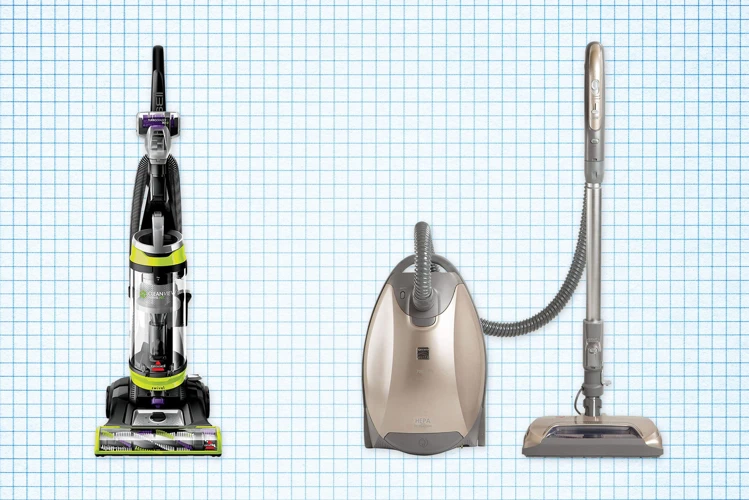
When it comes to vacuum cleaners, suction power is one of the most crucial factors that determine its cleaning ability. Without a powerful suction, your vacuum may struggle to pick up dirt, debris, and other particles from your floors and carpets. So, what are the key components that make up a vacuum’s suction power? Let’s take a deeper dive with a strong focus on highlighting the important details.
Air Flow and Sealed System
When it comes to a vacuum cleaner’s suction power, air flow and a sealed system are two critical factors that play a crucial role. A good suction power helps to pull the dust and dirt particles away from surfaces, and the air flow and sealed system ensure that the dirt stays trapped within the vacuum cleaner instead of being expelled back into the room.
The air flow is the amount of air that a vacuum cleaner can draw in every second. The greater the air flow, the more efficient the suction power. When choosing a vacuum cleaner, it is essential to look for one that has a high air flow. This information is usually given in cubic feet per minute (CFM) or liters per second (L/s). Additionally, it’s important to note that lesser-known brands or cheaper models may exaggerate their air flow rating. So, it’s always good to research the credibility of the brand before investing.
A vacuum cleaner’s sealed system prevents the air from leaking out, which helps to prevent dust and dirt from escaping. A vacuum cleaner with a good sealed system has a higher suction power than those with a poorly-sealed system.
To determine the effectiveness of the sealed system, a vacuum cleaner is tested by the Carpet and Rug Institute (CRI). The CRI provides an assurance that the vacuum cleaner will work as advertised. It measures the amount of dirt and dust particles that the vacuum cleaner releases back into the air, ensuring that it meets the standards set by the institute.
The combination of air flow and sealed system is essential to achieving a high suction power. When choosing a vacuum cleaner, it’s essential to look for a model that has both. The table below highlights some of the top vacuum cleaners that offer a good air flow and sealed system.
| Vacuum Cleaner | Air Flow (CFM) | Sealed System |
|---|---|---|
| Dyson Cyclone V10 Absolute | 150 | Advanced Radial Root Cyclone technology |
| Shark IONFlex 2X DuoClean Cordless | 115 | Anti-Allergen Complete Seal Technology |
| Miele Complete C3 Marin Canister Vacuum | 144 | AirClean Sealed System |
These vacuum cleaners have an excellent air flow and a sealed system, making them some of the most effective models available today.
Amps and Watts
When it comes to vacuum cleaners, amps and watts play a crucial role in determining their cleaning ability. Let’s take a closer look at each of these factors in detail.
Amps: Amps, short for amperes, measures the electric current flowing through the motor of the vacuum cleaner. A higher amp rating means that the motor can generate more power, resulting in better suction.
However, it’s important to note that amps alone aren’t a foolproof indicator of a vacuum’s cleaning ability. The design of the vacuum cleaner’s motor and filtration system also plays a significant role.
Watts: Watts is a measure of the total amount of power the vacuum cleaner consumes. In general, higher wattage also means better suction power, but it’s not always the case. A poorly designed vacuum may consume a lot of watts but still have weak suction due to limitations in its motor and filtration system.
Here’s a table summarizing the average amp and watt ratings for vacuum cleaners and their corresponding cleaning ability:
| Vacuum Type | Amp Rating | Wattage | Cleaning Ability |
|---|---|---|---|
| Upright | 7-12 amps | 1200-2200 watts | Good for deep cleaning carpets |
| Canister | 8-12 amps | 1000-1400 watts | Effective on hard floors and low-pile carpets |
| Stick | 4-6 amps | 1000-1400 watts | Lighter and less powerful |
| Handheld | 3-6 amps | 500-1000 watts | Convenient for quick cleanups |
It’s clear that the type of vacuum you choose also affects the ideal range of amp and watt ratings you should look for. It’s important to note that higher ratings aren’t always better; it’s all about finding the right balance of factors for your specific cleaning needs.
Variable Suction Control
The suction power of a vacuum cleaner is an important factor that affects its cleaning ability. However, it is not always necessary to use full suction power for every cleaning task. This is where variable suction control becomes important.
Variable suction control allows users to adjust the suction power of the vacuum cleaner according to the task at hand. This feature is particularly useful when cleaning delicate surfaces such as curtains, upholstery, or area rugs. Using full suction power on these surfaces can damage them or pull the fibers out.
Most vacuum cleaners with variable suction control have a dial or switch that can be used to adjust the suction power. Some high-end models even have electronic controls that allow for more precise adjustments.
The table below shows some popular vacuum cleaners with variable suction control:
| Vacuum Cleaner Model | Variable Suction Control | Price |
|---|---|---|
| Dyson Cyclone V10 Absolute | Yes, with three modes | $549.99 |
| Shark Apex Uplight | Yes, with three modes | $249.99 |
| Bissell PowerEdge Pet Hardwood Floor Corded Vacuum | Yes, with variable settings | $69.99 |
Having the ability to adjust the suction power also makes vacuum cleaners more versatile and useful in different situations. For instance, if you need to clean a high pile carpet, you may want to use maximum suction power for deep cleaning. However, for low pile carpets or hard floors, you may want to use lower or variable suction power.
Variable suction control is a valuable feature that can significantly affect a vacuum cleaner’s cleaning ability. It allows for more precise and effective cleaning and can prolong the life of delicate surfaces.
Brushroll
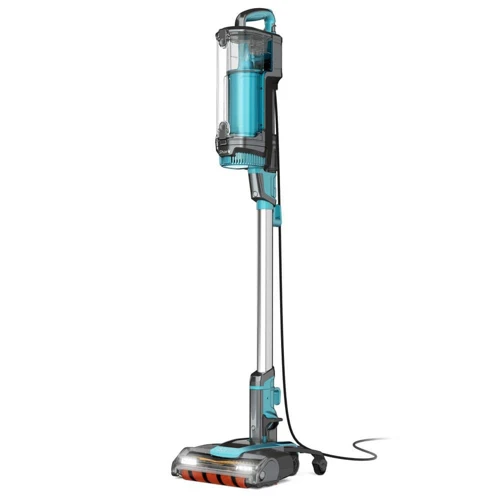
When it comes to a vacuum cleaner’s cleaning abilities, the brushroll is a crucial component that shouldn’t be overlooked. This mechanism is responsible for agitating the carpet fibers, dislodging any dirt or pet hair, allowing the suction power to effectively remove it. Understanding the factors that affect the brushroll’s performance can help you choose the right vacuum cleaner for your specific cleaning needs. Let’s take a closer look at some of the vital factors that can influence the brushroll’s cleaning prowess.
Size and Material of Brushes
When it comes to the brushroll, the size and material of the brushes can affect a vacuum cleaner’s cleaning ability. Here are some important factors to consider:
- Size: A larger brushroll can cover more surface area and pick up more dirt and debris in a single pass. However, a smaller brushroll can be more maneuverable and easier to maneuver around furniture and tight spaces.
- Material: The material of the brushes can also impact their cleaning ability. A brushroll with stiff bristles can be better at agitating carpet fibers and removing embedded dirt, but may not be suitable for use on hardwood or other delicate flooring. On the other hand, a brushroll with softer bristles or a felt strip can be gentler on hard floors, but may not be as effective on deep-pile carpets.
It’s worth noting that some vacuum cleaners come with adjustable or interchangeable brushrolls, allowing you to switch between different sizes or materials depending on your cleaning needs. This can be especially useful if you have a mix of hard flooring and carpeted areas in your home.
In addition to size and material, it’s also important to consider the rotation speed of the brushroll. A higher rotation speed can improve deep cleaning performance, but may also increase the risk of damage to delicate flooring or fabrics. Some vacuum cleaners feature adjustable brushroll speeds, allowing you to customize the cleaning power based on the type of surface you’re cleaning.
The size and material of a vacuum cleaner’s brushroll are important factors to consider when assessing its cleaning ability. By selecting the right brushroll for your home’s flooring and cleaning needs, you can ensure that your vacuum is working at maximum efficiency.
Rotation Speed
The rotation speed of a vacuum cleaner’s brushroll is another important factor that affects its cleaning ability. To understand this factor better, let’s take a look at a few crucial details.
1. Brushroll Types: There are generally two types of brushrolls- those with fixed brushes and those with moving ones. The former is suitable for cleaning hard floors, while the latter is more effective for carpets and rugs because they dislodge dirt and debris that is stuck deep within the fibers.
2. Brushroll Material: Another aspect to consider is the material used for making the brushroll. For instance, a metal brushroll is durable and can withstand heavy usage, while a softer brushroll can be ideal for cleaning delicate surfaces like upholstery.
3. Variable Rotation Speed: Some vacuum cleaners come with a feature that allows you to change the speed of the brushroll. This feature is beneficial when cleaning different types of surfaces. A high-speed setting could be great for removing stubborn dirt from a carpet, while a lower speed might be more suitable for cleaning delicate fabrics.
4. Compatibility: It’s always essential to check if the rotation speed of the brushroll is compatible with the vacuum cleaner’s motor. A brushroll with a high-speed setting might be unsuitable for a low-powered motor, as it could eventually cause it to burn out.
When looking for a vacuum cleaner, you should take note of the rotation speed of the brushroll, its type, material, variable speed feature, and compatibility with the motor. All these factors combine to provide an efficient cleaning solution.
Adjustable Height
One of the important factors to consider when it comes to a vacuum cleaner’s brushroll is its adjustable height feature. This feature allows the vacuum cleaner to adjust its brushroll’s height according to the type of surface it is cleaning. The proper height adjustment ensures maximum cleaning efficiency, and preventing potential damage to delicate floors.
Advantages of Adjustable Height:
- Effective Cleaning: The adjustable height feature allows the brushroll to clean carpets, rugs or floors perfectly by adjusting its height. It can effectively clean corners, crevices, and hard-to-reach areas.
- Prevents Damage: Some floors are delicate and may get damaged when exposed to the harsh bristles of the brushroll. When the adjustable height feature is used, the brushroll can be raised to prevent damage to delicate floors such as hardwood or marble.
- Longevity: A brushroll that has an adjustable height will last longer compared to a fixed-height brushroll. When the brushroll is adjusted to the appropriate height for each surface, it can maintain its orientation and cleaning efficiency, and last longer due to less wear and tear.
How to Use the Adjustable Height Feature:
- Hard Floors: When cleaning hard floors, raise the brushroll to the maximum height to prevent scratches and damage to the surface.
- Low-Pile Carpet: Set the brushroll to medium height to allow for proper cleaning on low-pile carpets.
- High-Pile Carpet: Lowering the brushroll height to the minimum setting provides maximum cleaning efficiency for high-pile carpets.
The adjustable height feature on a vacuum cleaner brushroll is a significant factor that affects its cleaning ability. With this feature, the brushroll can maintain cleaning efficiency while preventing potential damage to delicate floors.
Dustbin Capacity
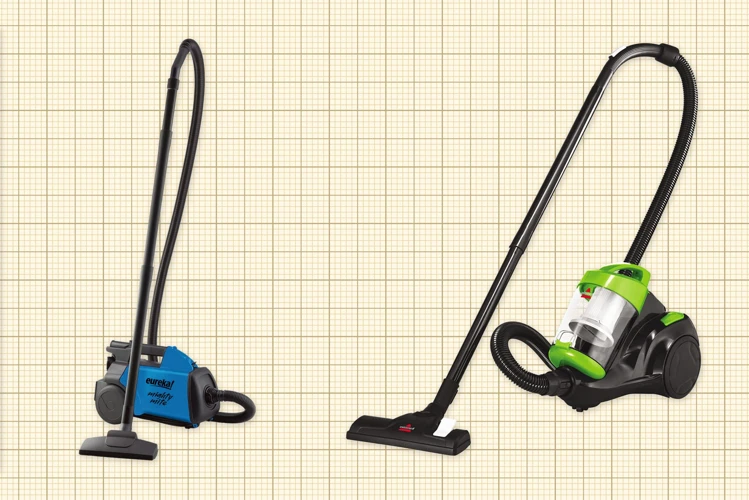
As you continue to search for that vacuum cleaner that stimulates your fancy, don’t overlook the importance of dustbin size. If you’re tired of constantly emptying your vacuum’s dustbin after every cleaning session or you have a large space that needs cleaning, a vacuum cleaner with a larger dustbin capacity may be the way to go. But that’s not all, you’ll also need to consider the type of vacuum — bagged or bagless — as this could significantly impact your cleaning experience. Let’s dive into the details to help you make an informed choice.
Importance of Dustbin Size
When it comes to choosing a vacuum cleaner, the dustbin size is an important consideration. Here are some reasons why it matters:
- Less Frequent Emptying: A larger dustbin size means you can clean more without stopping to empty the bin. This is especially important if you have a large home or a lot of carpeted areas that need frequent cleaning.
- Efficiency: A larger dustbin can improve the efficiency of your cleaning. Because there’s more space in the bin, the vacuum doesn’t need to work as hard to maintain suction. This means you can clean more thoroughly with less effort.
- Convenience: A vacuum with a large dustbin size can save you time and hassle. You won’t have to stop as frequently to empty the bin, so you can get the job done faster.
- Cost-Effective: A vacuum with large dustbin size will save you money in the long run. With a smaller dustbin, you’ll need to replace bags more frequently, which can add up over time. A larger dustbin means you can save money on bags and reduce your environmental impact.
So, when shopping for a vacuum cleaner, consider the dustbin size as an important factor. It can help you save time, effort, and money, while also ensuring that your cleaning is efficient and effective.
Bagged vs. Bagless Models
When it comes to choosing between bagged and bagless models of vacuum cleaners, there are a few important factors to consider. Let’s take a closer look at the pros and cons of each option:
Bagged Models:
- Better Filtration: Vacuum cleaners that use bags for dust collection tend to have stronger filtration systems compared to their bagless counterparts. Bags trap dust, dirt, and other allergens more effectively, preventing them from being released back into the air while vacuuming. This makes bagged models ideal for households with allergy or asthma sufferers.
- No Mess: Since the dust and debris are collected in bags, disposing of them is a breeze. Simply remove the bag and throw it in the trash without worrying about any mess or dust flying around.
- Less Maintenance: Bagged models require less maintenance since the bag acts as an additional filter. Changing the bag on a regular basis is all that’s needed to keep the unit running smoothly.
Bagless Models:
- Cost Savings: Bagless models can be a more cost-effective option since you don’t need to purchase replacement bags. This can save you money in the long run, especially if you use your vacuum frequently.
- Better for the Environment: Since there are no bags to dispose of, bagless models are more environmentally friendly compared to their bagged counterparts. This makes them a great choice for those who are conscious about their carbon footprint.
- Easy to See When It’s Full: With bagless models, you can easily see when the dustbin is full and needs to be emptied. This helps you avoid overfilling the bin, which can lead to decreased suction power.
Ultimately, the decision between bagged and bagless models depends on a few factors, such as your personal preferences, budget, and cleaning needs. However, it’s worth noting that while bagless models may be more cost-effective upfront, they may require more maintenance in the long run to keep their filtration systems working effectively.
Mobility
Your vacuum cleaner may have all the bells and whistles when it comes to its filtration system, suction power, and brushroll, but if it’s difficult to move around or gets stuck in tight spaces, cleaning your home can quickly become a chore. That’s why the mobility factor is just as important as any other element in a vacuum cleaner. In this section, we’ll explore the various aspects of a vacuum cleaner’s mobility that can make your cleaning experience a breeze. From weight and size to maneuverability features, let’s uncover what you need to know to make the right choice.
Weight and Size
The weight and size of a vacuum cleaner are important factors that affect its cleaning ability. It is important to consider these aspects because they determine how easy or difficult it will be to transport and use the device.
Weight:
The weight of a vacuum cleaner is a critical factor when it comes to mobility. If the device is too heavy, it can be challenging to carry it up and down the stairs or move it around furniture. On the other hand, a vacuum cleaner that is too light may not offer the necessary suction power to clean deeply embedded dirt and debris from carpets and floors.
Size:
The size of a vacuum cleaner is also crucial because it determines how easy it is to store and transport. A smaller vacuum cleaner can easily fit in tight spaces, making it ideal for apartments or small homes with limited storage space. A larger vacuum cleaner, on the other hand, may be bulkier, but it offers more suction power, a larger dustbin size, and more advanced cleaning features.
Weight and Size Comparison:
To give you an idea of how weight and size may affect a vacuum cleaner’s cleaning ability, we have compiled a comparison chart below:
| Vacuum Cleaner Model | Weight | Size |
|---|---|---|
| Shark Navigator Lift-Away Professional NV356E | 13.7 pounds | 15 x 11.4 x 45.5 inches |
| Dyson Cyclone V10 Absolute | 5.88 pounds | 49.2 x 9.8 x 10.1 inches |
| Bissell PowerEdge Pet Hardwood Floor Corded Vacuum 81L2A | 7.5 pounds | 10.6 x 11.3 x 43.3 inches |
As you can see, the Shark Navigator Lift-Away Professional NV356E is heavier and more substantial than the Dyson Cyclone V10 Absolute but offers more suction power and cleaning features. The Bissell PowerEdge Pet Hardwood Floor Corded Vacuum 81L2A is lighter and more compact but is better suited for cleaning hardwood floors and low-pile carpets than deep pile carpets.
When shopping for a vacuum cleaner, it is essential to consider both the weight and size, keeping in mind that a heavy, large vacuum cleaner may provide more features but may be challenging to maneuver, while a smaller, lighter vacuum cleaner may not have the same suction power or dustbin capacity.
Maneuverability Features
When it comes to choosing a vacuum cleaner, the maneuverability features are an important consideration that should not be overlooked. These features can significantly affect the overall cleaning experience and ease of use of the vacuum cleaner.
Maneuverability Features of a vacuum cleaner include:
| Features | Description |
|---|---|
| Swivel Steering | This feature allows the head of the vacuum cleaner to swivel effortlessly in any direction, making it easy to steer around furniture and other obstacles without having to lift or adjust the machine. |
| Handle Design | The shape, location, and grip of the handle can all affect how comfortable and easy it is to maneuver the vacuum cleaner. Look for comfortable and ergonomic handles that are easy to grip and reach while cleaning. |
| Weight Distribution | A well-balanced vacuum cleaner is easier to maneuver and less likely to cause fatigue or strain on the user’s arm or wrist. Look for models that distribute the weight evenly across the machine or have a low center of gravity for increased stability. |
| Flexible Hoses and Wands | Flexible hoses and wands allow the user to easily reach into tight spaces, under furniture, and into other hard-to-reach areas. This feature helps ensure that all areas are cleaned effectively and efficiently. |
| Height Adjustment | Some models of vacuum cleaner have adjustable height settings that allow the user to easily clean carpets, rugs, and hard floors. The height adjustment feature is especially important if your home has a variety of flooring types. |
| Cord Length | Longer cords can be a useful maneuverability feature, as they allow the user to clean large areas without having to unplug and move the machine. Look for models with cords that are at least 25 feet long or have an attached extension cord. |
| Attachments and Accessories | Additional attachments and accessories, such as crevice tools, dusting brushes, and upholstery attachments, can make cleaning easier and more effective. Look for models that include a variety of useful attachments that are easy to use and store. |
When shopping for a vacuum cleaner, it’s important to prioritize the maneuverability features that matter most to you. Consider the layout of your home, the types of flooring you have, and any other factors that may affect how easy or difficult it is to clean. With the right maneuverability features, you can make vacuuming a breeze and keep your home clean and tidy with minimal effort.
Conclusion
In summary, the cleaning ability of a vacuum cleaner is affected by several factors that should be considered when purchasing a new model. First, the filtration system is crucial for keeping the air clean while vacuuming. High-Efficiency Particulate Air (HEPA) filters and multi-stage filtration systems are great options for those with allergies or respiratory issues. Proper filter maintenance is also necessary to ensure the longevity of the vacuum.
Secondly, suction power is a critical aspect of a vacuum’s cleaning ability. Amps and watts are important to consider, but airflow and sealed systems make a greater impact on suction power. Models with variable suction control offer greater flexibility for different surfaces and cleaning tasks.
Thirdly, the brushroll plays a significant role in cleaning carpets and other surfaces. Brushroll size, material, and rotation speed should be considered, and models with adjustable height can accommodate different carpet lengths.
The dustbin capacity is also an essential factor to consider, as it can impact the frequency of emptying and the overall convenience of the vacuum. Bagged vs. bagless models have their respective pros and cons, and larger dustbins may be necessary for those with more significant cleaning needs.
Lastly, mobility is an often-overlooked factor in choosing a vacuum cleaner. The weight and size can impact the ease of use, and models with maneuverability features such as swivel heads and adjustable handles offer greater flexibility for cleaning around furniture and tight spaces.
Overall, the perfect vacuum cleaner will depend on individual needs and preferences. However, considering these five factors – filtration system, suction power, brushroll, dustbin capacity, and mobility – can help ensure that the chosen model provides optimal cleaning ability for years to come.
Frequently Asked Questions
What is the best type of filtration system for a vacuum cleaner?
The best type of filtration system for a vacuum cleaner is a high-efficiency particulate air (HEPA) filter. It can capture 99.97% of particles as small as 0.3 microns.
How often should vacuum filters be replaced?
It is recommended to replace vacuum filters every 3 to 6 months, depending on usage.
What is the importance of suction power in a vacuum cleaner?
Suction power determines a vacuum cleaner’s ability to pick up dirt and debris. The stronger the suction power, the more effective the cleaning ability.
What is the difference between amps and watts when referring to suction power?
Amps refer to the amount of electrical current drawn by the vacuum cleaner motor, while watts refer to the amount of power that the motor produces. A higher wattage indicates a higher suction power.
What type of brushroll is best for a vacuum cleaner?
The best brushroll for a vacuum cleaner depends on the type of flooring being cleaned. A brushroll with soft bristles is ideal for hardwood floors, while a brushroll with stiff bristles is better for carpeted floors.
What is the importance of adjustable height in a brushroll?
Adjustable height allows the brushroll to be raised or lowered depending on the height of the flooring being cleaned. This ensures that the brushroll is making proper contact with the surface and picking up debris effectively.
What is the difference between bagged and bagless vacuum cleaners?
Bagged vacuum cleaners collect dirt and debris in a disposable bag that needs to be replaced, while bagless vacuum cleaners have a dustbin that can be emptied and reused. Bagged vacuum cleaners tend to have better filtration systems, but bagless vacuum cleaners are more eco-friendly and cost-effective in the long run.
What mobility features should I look for in a vacuum cleaner?
Look for a vacuum cleaner that is lightweight and easy to maneuver. Swivel steering, adjustable handles, and a low profile design are all good features to consider.
How often should I empty the dustbin in my vacuum cleaner?
The dustbin should be emptied after every use, or when it reaches maximum capacity, to ensure optimal cleaning ability.
What is the importance of regular vacuum cleaner maintenance?
Regular maintenance, such as changing filters and cleaning brushrolls, ensures that the vacuum cleaner is functioning at its best and prolongs its lifespan.

